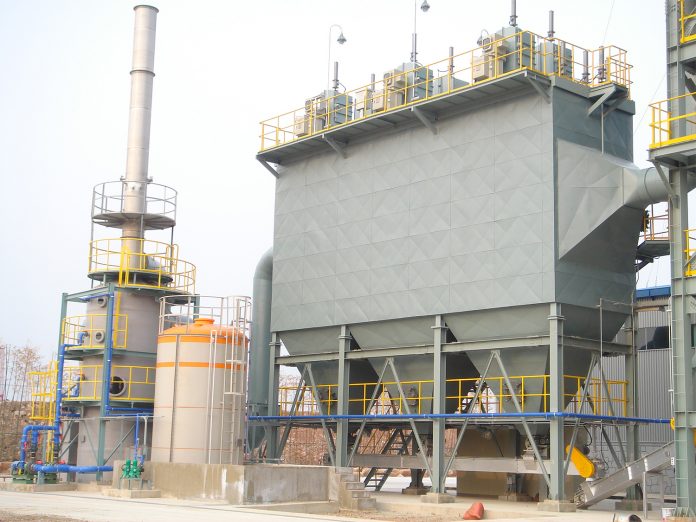Storage tanks are extensively used throughout the global platform for bulk containment of different fluids. These function mainly to store these fluids at different stages of their refinery procedures. And these tanks find usage in the oil and gas industry.
Most often, the products remain stored in these tanks for a brief period before they are transported for advanced processing. Professionals from a mechanical or structural engineering background are responsible for designing these tanks to ensure compliance with code and client requirements.
About API Tanks
API is the acronym for American Petroleum Institute, which predefines the minimum requirements of these storage tanks and their features. This institute is responsible for outlining the standards for design, erection, fabrication, and inspection of these welded storage tanks used in the oil and gas industry.
Let’s look at the chief tanks which are mainly used for these applications:
Fixed Roof Tanks
API 650 is responsible for prescribing the storage tank design requirements that can minimize structural failure risks. These can also determine the potential damages done to the environment.
However, the standard does not include the basic features or the tank’s dimensions that might need inclusion within the design. Hence, these are generally specified by the users according to their personal requirements and application. Some of the primary features of these fixed roof tanks are:
- Vapor Vent: It is an essential aspect of the storage tank, also known as the breather valve. Without the inclusion of a proper functioning vapor vent, these tanks might damage due to pressure buildup while filling. The vacuum created within these tanks during the emptying process might also cause the tank to collapse.
- Sampling and Gauging Hatch: These are also known as the thief hatch, which is necessary for retrieving the content samples for detailed analysis. The professionals use this as an additional access point for a dip-stick to measure the tank’s level. I
- Drain: The drains are used for removing any water that keeps separating from the product. These are also extensively used for cleaning operations.
- Relief Valve: These are designed to relieve the pressure if it exceeds the safe operating limit.
- Inert Gas Blanket: These blankets are primarily used for displacing air that can form any flammable or explosive mixture with the vapors from volatile liquids within the tank. In this case, nitrogen is preferably used.
- Earth Connection: During filling as well as emptying the storage tank, static electricity tends to form. It constitutes a potential explosion or even a fire hazard in specific cases of flammable liquids. Hence, the presence of an earth connection is necessary to prevent any buildup of static electricity.
- Fire Protection: These tanks are often provided with a ring of nozzles, which can spray foam into and over the entire tank’s surface in case of any fire.
- Manhole: Lastly, manholes are placed on the vessel’s roof or even at the ground level. It is used to facilitate access from the tank’s interior portion for cleaning, inspection, and maintenance purposes.
Floating Roof Storage Tanks
The other major type of tank that you must know about is the floating roof storage tank. These are also operated and governed by the mechanical or structural engineering professionals. These are tanks that are primarily designed with a separate roof.
The roof is supposed to float right on top of the liquid. The floating roof moves in different directions as per the liquid changes within the tank during emptying or filling. It can also change depending on the changes due to the temperature variations.
However, this roof tends to minimize the amount of vapor present between the tank and the liquid, thereby leaving little space for evaporation. It also helps to reduce the vapor losses of the tank.
In the older versions of these tanks, the floating roof was merely a big flat disc covering the entire liquid’s surface. But with the advancement of technology, the design has seen considerable improvement.
These tanks are available in two forms: pontoon and double-deck roofs. The former one is available with closed compartments that remain fitted with the outer edge. It is fitted right under the roof, which allows it to float on the liquid’s top surface.
The latter one comes with two decks of steel plates. Some compartments separate these steel plates, thereby covering the surface area. As a result of such a design, it adds stability due to its proximity to the specific liquid. Hence, it brings about a sharp decrease in vapor losses.
Some of the features of these floating roof tanks are:
- Access Ladder: It is present over the top and the downside of the interior portion of the tank. It is responsible for the internal movement of the track.
- Seal: It is a strip of flexible and rubberized substance used to provide a seal between the floating roof rim and tank shell.
The other features include a water drain and the support legs of the roof. These are useful for cleaning and maintenance of the tank.
Final Thoughts
As these tanks are crucial for storing oil and gases, choosing the right one depends on the operator’s specific requirements. However, ensure that these tanks are properly designed as per the standards given by API. In case you have more details to add to this post, make sure to comment below.









